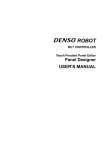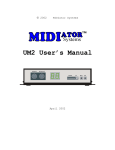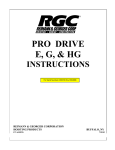Download PANEL MONITORING - Hawkins Equipment
Transcript
3B6 LOAD MOMENT INDICATOR (LMI) FOR MRT TELESCOPIC HANDLERS USER MANUAL Su stabilizzatori 360° 0 1 2 3 4 5 6 7 8 9 10 11 12 13 14 15 16 17 18 19 20 21 22 23 24 25 26 27 28 29 0 0 1000 1001 4 4,5 5 5,5 6 6,5 7 7,5 8 8,5 9 9,5 10 10,5 11 11,5 12 12,5 13 13,5 14 14,5 15 15,5 1 5,7 110 2 6,7 100 3 7,9 100 4 9,1 100 5 10,3 100 6 11,5 100 7 12,8 100 8 14 100 9 15,2 100 10 16,6 100 5 5 4,5 4,2 4 5 5 4,5 4,2 4 4 3,2 3 2,8 5 5 4,5 4,2 4 4 3,2 3 2,8 2,4 2,4 2,1 2 4,5 4,5 4,5 4,2 4 4 3,2 3 2,8 2,4 2,4 2,1 2 1,65 4 4 4 3,7 3,5 3,2 3 2,8 2,8 2,4 2,4 2,1 2 1,65 1,6 1,4 1,35 1,2 1,15 3,2 3,2 3,2 3 3 2,8 2,8 2,4 2,2 2,2 2,2 2,1 2 1,65 1,6 1,4 1,35 1,2 1,15 1 0,95 3 3 3 3 2,8 2,8 2,4 2,2 2,2 2,1 1,9 1,9 1,8 1,65 1,6 1,4 1,35 1,2 1,15 1 0,95 0,85 0,8 0,8 2,8 2,8 2,8 2,8 2,8 2,55 2,4 2,2 2,1 2 1,9 1,8 1,65 1,6 1,5 1,4 1,35 1,2 1,15 1 0,95 0,85 0,8 0,8 2,8 2,8 2,8 2,8 2,65 2,5 2,3 2,15 2,05 1,9 1,8 1,7 1,6 1,5 1,45 1,4 1,35 1,2 1,15 1 0,95 0,85 0,8 0,8 2,4 2,4 2,4 2,4 2,3 2,3 2,2 2,1 1,95 1,8 1,7 1,6 1,55 1,45 1,45 1,4 1,35 1,2 1,15 1 0,95 0,85 0,8 0,8 Complies to the MACHINES DIRECTIVE Standards: EN60204-1, EN954, EN12077-2 EMC according to the “ Heavy Industrial Environment” category: EN50081-2, EN50082-2 11 29 2 INDEX What the load moment indicator does? LOAD MOMENT INDICATOR (LMI) FUNCTIONAL DESCRIPTION Which components are included in an LMI? SYSTEM LAY-OUT AND CONNECTIONS How is the LMI installed on the machine? COMPONENTS LOCATION ON THE MACHINE What’s the need of the control panel? CONTROL PANEL DESCRIPTION What does it happen when starting the machine? SWITCHING THE MACHINE ON What should be checked once the machine is running? SWITCHING THE MACHINE ON Is the control panel informing about safety on the machine? PANEL MONITORING– Lifting condition in % and alarms Is the control panel giving useful information to work? PANEL MONITORING– Main working data reading on the display Can the control panel give other information? PANEL MONITORING–Reading of complementary working data on the display Is it possible to read all data simultaneously ? PANEL MONITORING (option) – Reading all working data simultaneously Has something to be set on the control panel? SELECTING THE ATTACHMENT AND OPERATING MODE Is it easy to understand in which working condition system is? SELECTING THE ATTACHMENT AND OPERATING MODE – Monitoring through text messages How to select the attachment ? SELECTING THE ATTACHMENT AND OPERATING MODE – Setting up load tables Can the LMI detect faults? AUTO DIAGNOSTIC How the fault shows up ? ALARM CODES AND ACTIONS TO TAKE Apart the alarm codes, is the LMI able to give further data about its own internal operations? AUTO DIAGNOSTIC – System internal working condition monitoring Geometric data and load data Hydraulic pressures data Sensors digital signals Status of digital Inputs from outside Status of digital Outputs to outside What should be known before operating with the machine? WARNINGS Page 3 4 5 6 7 8 9 10 11 12 13 14 15 16 17, 18, 19 20 21 22 23 24 25, 26 What the load moment indicator does ? 3 The LMI aim is to control that the machine doesn’t exceed working condition limits, making the Operator aware and acting through alarms and shut-down of dangerous movements. LOAD MONITORING INDICATOR (LMI) FUNCTIONAL DESCRIPTION Working condition measurements Load Tables storage, comparing and processing Su stabilizzatori 360° PRESSURE TRANSDUCERS (Lifted load) 0 1 2 3 4 5 6 7 8 9 10 11 12 13 14 15 16 17 18 19 20 21 22 23 24 25 26 27 28 29 0 0 1000 1001 4 4,5 5 5,5 6 6,5 7 7,5 8 8,5 9 9,5 10 10,5 11 11,5 12 12,5 13 13,5 14 14,5 15 15,5 1 5,7 110 2 6,7 100 3 7,9 100 4 9,1 100 5 10,3 100 6 11,5 100 7 12,8 100 8 14 100 9 15,2 100 10 16,6 100 5 5 4,5 4,2 4 5 5 4,5 4,2 4 4 3,2 3 2,8 5 5 4,5 4,2 4 4 3,2 3 2,8 2,4 2,4 2,1 2 4,5 4,5 4,5 4,2 4 4 3,2 3 2,8 2,4 2,4 2,1 2 1,65 4 4 4 3,7 3,5 3,2 3 2,8 2,8 2,4 2,4 2,1 2 1,65 1,6 1,4 1,35 1,2 1,15 3,2 3,2 3,2 3 3 2,8 2,8 2,4 2,2 2,2 2,2 2,1 2 1,65 1,6 1,4 1,35 1,2 1,15 1 0,95 3 3 3 3 2,8 2,8 2,4 2,2 2,2 2,1 1,9 1,9 1,8 1,65 1,6 1,4 1,35 1,2 1,15 1 0,95 0,85 0,8 0,8 2,8 2,8 2,8 2,8 2,8 2,55 2,4 2,2 2,1 2 1,9 1,8 1,65 1,6 1,5 1,4 1,35 1,2 1,15 1 0,95 0,85 0,8 0,8 2,8 2,8 2,8 2,8 2,65 2,5 2,3 2,15 2,05 1,9 1,8 1,7 1,6 1,5 1,45 1,4 1,35 1,2 1,15 1 0,95 0,85 0,8 0,8 2,4 2,4 2,4 2,4 2,3 2,3 2,2 2,1 1,95 1,8 1,7 1,6 1,55 1,45 1,45 1,4 1,35 1,2 1,15 1 0,95 0,85 0,8 0,8 11 29 LENGTH AND ANGLE SENSOR (Boom Geometric data ) Data display and setting CONTROL PANEL READINGS : - % Tilting - Lifted load - Maximum load - Working radius (outreach) - Boom length - Boom angle - Operating mode -Attachment used - Diagnostic Alarms: Green/Amber/Red lights MANUAL SELECTIONS: - Forks - Winch - Basket - Jib AUTOMATIC SELECTIONS from micro-switches : - Outriggers - Turret rotation - Basket Automatic functions External alarm and automatic shut-down Which components are included in an LMI? 4 It’s a system including sensors able to detect lifted load,boom position, a main unit and a control panel situated inside at the cabin. SYSTEM LAY-OUT AND CONNECTIONS 4 OM 1 T 1 1 2 2 3 4 5 6 3 6 7 5 1 2 3 4 5 6 7 8 3 8 2 Power supply and Inputs/Outputs to outside Main Unit Pressure Transducers (4) Length/Angle Sensor Control Panel Pressure Transducer Cable Control Panel Cable Power Supply and In/Out’s cable Length/Angle Sensor Cable How is the LMI installed on the machine? 5 The sensors are positioned on the boom and cylinders in order to detect data when working, while the main unit and the control panel are located inside the cabin. COMPONENTS LOCATION ON THE MACHINE Length/Angle sensor: On the left side of the boom Control Panel: In the cabin Main Unit : Into the cabin Nr.4 Pressure Transducers: on Main and Compensation cylinders What’s the need of the control panel? 6 It gives to the operator all information in order to work in safe conditions and allows proper setting . CONTROL PANEL DESCRIPTION Operating Mode Identification Symbols ( External automatic selections) Attachment Identification symbols (Manually selected from the control panel) Green/Amber/Red Lights showing working conditions ( Safety/ Alarm/Shut down) Two rows alpha-numeric LCD display showing working data 2.2 4.0 Symbols and letters related to the display indications 6.1 11 4 Set-up keys (key “-” and “+” are not used in normal working condition) Icon representing the machine and letters related to geometric data. What does it happen when starting the machine? The system gets activated and automatically proceeds to its self test mode giving information to the Operator. SWITCHING THE MACHINE ON Starting the machine,the system automatically goes on and, for a few seconds, the machine model and the software version shows up ( dd.mm.yy= software date of development) UM45_4x MRT2145 dd-mm-yy Afterwards, still for a few seconds, it shows the machine working condition, that is the load table (attachment selected ) and the present Operating Mode. Forks 360 on Outrigg. 7 What should be checked once the machine is running? Once the self test is processed, the control panel informs the operator of the working conditions which the machine is set asking to check it. SWITCHING THE MACHINE ON At this stage,the display shows the page where the main readings are monitored. 2.2 4.0 6.1 11 This page shows working data and conditions: OM = Operating Mode ( from external automatic Inputs) T = Load Table corresponding to the last selected attachment. IMPORTANT IT IS COMPULSORY, BEFORE DOING ANY WORK, TO MAKE SURE THAT THE SELECTED TABLE CORRESPONDS TO THE SELECTED ATTACHMENT. IF A DIFFERENT ATTACHMENT GETS SELECTED, IT’S COMPULSORY TO SELECT THE CORRESPONDING TABLE ( PLEASE SEE “ATTACHMENT SELECTION AND OPERATING MODE” SECTION) 8 Is the control panel informing about safety on the machine? Yes! It has been designed and its main scope is to check the machine working conditions, comparing them to the limits given by the load Tables previously memorised PANEL MONITORING - Lifting Conditions % and alarms 1 7 2 2.2 4.0 6 3 6.1 4 11 5 1) 2) LCD bar showing the lifted load in percentage to the maximum admitted load in that working condition. Green reference: Safe Zone. 3) Amber reference: Alarm Zone (Lifted load higher than 90% of maximum admitted load). 4) Red reference: Shut-off Zone ( Lifted load higher than al 100% of maximum admitted load). 5) Green light on: Safe Working 6) Amber light on: Alarm (External buzzer on ) 7) Red light on: Dangerous movements shut off (External buzzer on ) 9 Is the control panel giving useful information to work? Yes! It shows on the display all data related to the lifted load and the boom position PANEL MONITORING -Main Working Data Reading on the display 8 9 2.2 4.0 10 6.1 11 11 8) LIFTED LOAD WEIGHT: It shows up when the forks are selected with the boom completely in. ( as a option it is available also when winch and basket are used, regardless the boom extension). Graphic Symbol : Reading in “Tonnes”, with a decimal point ACT 9) MAXIMUM ADMITTED LOAD: In machine present configuration. Graphic symbol : Reading in “Tonnes”, with a decimal point MAX 10) WORKING RADIUS: distance from the centre of turret rotation to applied load). R Graphic symbol : Reading in “Metres”, with a decimal point 11) WORKING CONFIGURATION: The first figure refers to the Operating Mode. Graphic symbol: OM T The second figure refers to the attachment been used . Graphic symbol: NOTE :In case of Imperial Measure System, the weight will be displayed in “Pounds/1000” and the geometric data in “Feet”. 10 Can the control panel give other information ? Yes! Showing complementary readings related to the boom position. PANEL MONITORING - Reading of complementary working data on the display Pressing the ENTER push button the display shows as follows : 12 13 14 6.7 48.5 7.5 11 For a few seconds, it gets monitored the complementary data values of L, A, H. After that, the display gets back to its main reading of ACT, MAX, R. 12) BOOM LENGTH. Graphic Symbol : 13) Reading in “Meters”, with a decimal point. A Reading in “Degrees” with a decimal point.. H Reading in “Meters”, with a decimal point. BOOM ANGLE. Graphic Symbol : 14) L HEIGHT FROM GROUND. Graphic Symbol : NOTE :In case of Imperial Measure System, the weight will be displayed in “Pounds/1000” and the geometric data in “Feet”. 11 Is it possible to read all data simultaneously? Yes, this is an option to be requested to MANITOU in advance. PANEL MONITORING (option) - Reading all working data simultaneously 12 1 8 13 9 6.7 2.2 4.0 1) 8) 9) 10) 11) 12) 13) PERCENTAGE BAR. LIFTED LOAD WEIGHT MAXIMUM ADMITTED LOAD WORKING RADIUS WORKING CONFIGURATION BOOM LENGTH BOOM ANGLE 10 6.1 11 48.5 11 ACT MAX R OM, T L A To read the HEIGHT from the ground level, press the ENTER button NOTES : For the graphic symbols and the Imperial Measures System, please see the notes given in the previous page THROUGH THE DISPLAY IT IS ALSO POSSIBLE TO MONITOR INTERNAL DATA RELATED TO THE FUNCTIONING OF THE SYSTEM: SEE AUTO DIAGNOSTIC CHAPTER. 12 Has something to be set on the control panel? 13 Yes, the machine can work with different attachment and their related Tables which are going to be selected by the Operator. The load Tables, are also changing by the different Operating Modes of the machine but this is done automatically by micro-switches installed onboard . SELECTING THE ATTACHMENT AND OPERATING MODE Every time that an attachment need to be replaced, i.e. forks get removed and the jib gets fitted, this setting must be done manually on the control panel, selecting the proper related Table ( T ). The selection of the Operating Mode ( OM ) is automatic because of the external micro-switches. In the main page, basically displayed, the selected attachment Table T, and the machine Operating Mode OM, get monitored on area shown below, by numbers. Following example of working conditions shows : OM = 1 360° on Outriggers 2.2 4.0 6.1 1 1 T=1 Forks. Referring to the symbols on the control panel, these are the possible selections: OM (Automatic) mainly: 1 = 360° on Outriggers 2 = Front on Wheels 3 = Side on Wheels 4 = 360° on ½ Outriggers . = Front on Outriggers . = Front on ½ Outriggers T (Manual) Selectable from the control panel: 1 = Forks 2 … 8 = They change depending on model machine. Please, refer to the specific machine manual. Is it easy to understand in which working condition system is? Yes, because the display will show also text messages. SELECTING THE ATTACHMENT AND OPERATING MODE - Monitoring through text messages In order to have an easier understanding of working condition, the OM Operating Mode and the T Load Table can also be monitored in text form: Pressing the INDEX button, the display will show very clearly the Operating Mode and the selected attachment. This page will be held for three seconds; after that the display gets back to the main working page. Forks 360 on Outrigg 14 How to select the attachment ? Simply pushing two buttons on the control panel. SELECTING THE ATTACHMENT AND OPERATING MODE Setting up Load Tables Starting from the basic monitoring, press the INDEX button in order to change from that page to the page related to the OM Operating Mode and the T Tables related to the attachment being used. In this condition, press the INDEX button in order to select the proper new Table, scrolling the different attachment available. During this operation, the system will automatically put itself in shut-down condition. After the right Table gets selected, press the ENTER button to confirm the selection in order to make it effective. Forks 360 on Outrigg. Attachment Available 1 Fork 2 Basket 2-4 365Kg 3 Pendulum 4 Basket 2-4 700Kg 5 Winch 5T 6 Jib 5T 7 Jib PT600 8 Jib PT1200 Now the machine is ready to work. Stopping and/or restarting the machine the previous Table will be kept valid, until the next manual selection will be done. 15 Can the LMI detect faults? 16 Of course. To be considered a reliable system, it must be able to perform self-check in order to detect internal or components faults. AUTO-DIAGNOSTIC The LMI is equipped of an auto diagnostic system which is able to detect faulty pressure transducers, or boom angle/length sensors, broken cables or internal electronic faults. When an alarm occurs, the LMI puts itself in a safe condition stopping the dangerous movements and at the same time the display shows an alarm message on the first row . According to alarm code and message, it will be possible to identify the fault. Alarm: 2.2 4.0 6.1 18 11 The codes are reported in the following list, that also includes some hints to solve the problem and get back to normal working conditions. How the fault shows up? 17 Through codes automatically shown on the display.Here follows the list including some hints to solve them. ALARM CODES AND ACTIONS TO TAKE Alarm code Description What to do 1 Memory data not reliable • Switch the system off and on. If the alarm persists, please, contact MANITOU Technical Assistance to: •Verify that E2prom chip is fitted properly in its socket. • Re-enter data and save them again • Replace the E2PROM chip and recalibrate the machine 2 Angle sensor reading lower than the minimum value • Verify that the wiring and the connectors are not in short circuit. If the alarm persists, please, contact MANITOU Technical Assistance : • Verify the angle sensor integrity. 3 Angle sensor reading higher than the maximum value •Verify that the cable or the connector wiring is not open If the alarm persists, please, contact MANITOU Technical Assistance : • Verify the angle sensor integrity. 4 Reading of the boom length sensor lower than the minimum value • Verify that the wiring and the connectors are not in short circuit If the alarm persists, please, contact MANITOU Technical Assistance: Verify the length transducer integrity 5 Reading of the boom length sensor higher than the maximum value • Verify that the cable or the connector wiring is not open If the alarm persists, please, contact MANITOU Technical Assistance : • Verify the length transducer integrity 6 N/A 7 N/A How the fault shows up? 18 Through codes automatically shown on the display.Here follows the list including some hints to solve them. Alarm codes Description What to do 8 Reading pressure of the main cylinder (bottom side) lower than the minimum. • Verify that the cable or the connectors wiring are not in short circuit If the alarm persists, please, contact MANITOU Technical Assistance : • Verify the pressure transducer integrity 9 Reading pressure of the main cylinder (bottom side) higher than the maximum. • Verify that the cable or the connector wiring are not open If the alarm persists, please, contact MANITOU Technical Assistance : •. Verify the pressure transducer integrity 10 Reading pressure of the main cylinder (rod side) lower than the minimum. •Verify that the wiring and the connectors are not in short circuit If the alarm persists, please, contact MANITOU Technical Assistance : •. Verify the pressure transducer integrity 11 Reading pressure of the main cylinder (rod side) higher than the maximum. • Verify that the cable or the connector wiring are not open If the alarm persists, please, contact MANITOU Technical Assistance : •. Verify the pressure transducer integrity 12 N/A 13 N/A 14 N/A 15 N/A 16 N/A 17 N/A How the fault shows up? 19 Through codes automatically shown on the display.Here follows the list including some hints to solve them. Alarm codes Description 18 Reading pressure of the compensation cylinder (bottom side) lower than the minimum. •Verify that the cable or the connector wiring are not in short circuit If the alarm persists, please, contact MANITOU Technical Assistance : • Verify the pressure transducer integrity. 19 Reading pressure of the compensation cylinder (bottom side) higher than the maximum. • Verify that the cable or the connector wiring are not open If the alarm persists, please, contact MANITOU Technical Assistance : •. Verify the pressure transducer integrity. 20 Reading pressure of the compensation cylinder (rod side) lower than the minimum. • Verify that the cable or the connector wiring are not in short circuit If the alarm persists, please, contact MANITOU Technical Assistance : •. Verify the pressure transducer integrity. 21 Reading pressure of the compensation cylinder (rod side) higher than the maximum. •. Verify that the cable or the connector wiring are not open If the alarm persists, please, contact MANITOU Technical Assistance : •. Verify the pressure transducer integrity. What to do And more, to make things easier, the internal operating conditions can be displayed directly on the display as follows. Apart the codes alarms, is the LMI able to give further data about its own internal operations? 20 Yes,through the display, which gives several data regarding sensors and Input/Output’s status signals. These data are valuable in order to inform the MANITOU Technical Assistance even from remote locations. AUTO DIAGNOSTIC- System internal working conditions monitoring Geometric data and load data These readings show on some pages the internal status of the system which become very useful when a fault occurs. Starting from the main working data page press twice the ENTER button: The display will show the first control page, giving geometric data and main cylinder differential pressure summary. P100 A 60 W 5.0 L20.3 M 5.0 R15.1 This page gets displayed for 30 seconds; after that ,it gets back to the normal working condition page. The displayed parameters are as follows: • P : Main cylinder differential pressure in Bar; • W : Lifted load weight in Tonnes (Pounds/1000 if Imperial Measures System is used); • M : Maximum admitted load in present position in Tonnes (Pounds/1000 if Imperial Measures System is used) • A : Actual angle in Degrees: • L : Actual boom length in Meters (in Feet if Imperial Measures System is used ); • R : Radius from turret rotation centre in Meters (in Feet if Imperial Measures System is used) Apart the codes alarms, is the LMI able to give further data about its own internal operations?21 Yes,through the display, which gives several data regarding sensors and Input/Output’s status signals. These data are valuable in order to inform the MANITOU Technical Assistance even from remote locations. AUTO DIAGNOSTIC- System internal working conditions monitoring Hydraulic pressures data Pressing again the ENTER button the display will show the second page showing: individual hydraulic pressures summary : P100 p 0 L: 50 l: 0 H: 40 h: 0 This page gets displayed for 30 seconds; after that ,it gets back to the normal working condition page. The displayed parameters are as follows: Upper row: • P : Main cylinder differential pressure in Bar; • L : Main cylinder bottom side pressure in Bar • H : Main cylinder rod side pressure in Bar Lower row: • p : Compensation cylinder differential pressure in Bar; • l : Compensation cylinder bottom side pressure in Bar; • h :Compensation cylinder rod side pressure in Bar; Apart the codes alarms, is the LMI able to give further data about its own internal operations? Yes,through the display, which gives several data regarding sensors and Input/Output’s 22 status signals. These data are valuable in order to inform the MANITOU Technical Assistance even from remote locations. AUTO DIAGNOSTIC- System internal working conditions monitoring Sensors Digital Signals Pressing once again the ENTER button the display will show the third page giving pressure transducers and length/angle sensors digital signals corresponding to the actual measurements. 1111 4444 2222 5555 3333 6666 This page gets displayed for 30 seconds; after that ,it gets back to the normal working condition page. The displayed parameters are as follows: • 1111 : Main cylinder bottom side pressure value in Bits; between 0 and 1023 (*) • 2222 : Main cylinder rod side pressure value in Bits; between 0 and 1023 (*) • 3333 : Angle value in Bits; between 0 and 1023 (*) • 4444 : Boom Length value in Bits; between 0 and 1023 (*) • 5555 : Compensation cylinder bottom side pressure value in Bits; between 0 and 1023 (*) • 6666 : Compensation cylinder rod side pressure value in Bits; between 0 and 1023 (*) (*) = Due to 10bits A/D Converter Apart the codes alarms, is the LMI able to give further data about its own internal operations? Yes,through the display, which gives several data regarding sensors and Input/Output’s 23 status signals. These data are valuable in order to inform the MANITOU Technical Assistance even from remote locations. AUTO DIAGNOSTIC - System internal working conditions monitoring Status of Digital Inputs from outside Pressing the ENTER button again, the display will show the fourth page giving Inputs given by the micro-switches (Operating Mode OM ) status summary. I 0 1 2 3 4567890123 * * - - ---------- This page gets displayed for 30 seconds; after that, it gets back to the normal working condition page. The displayed parameters are as follows: Digital Inputs (I) The upper row indicates the Input number, while the lower row indicates its status. The symbol “*” means active Input, the symbol “-” means non active Input . • 0 : Outriggers : “*” When they are on ground completely extended • 1 : Turret rotation : “*” When in front position. • 2 : ½ Outriggers : “*” When they are on ground but half extended. • 3 : Basket : “*” When basket is not fitted • 4…N : N/A NOTE : The combination of the Inputs status automatically selects the proper Operating Mode (OM ) and the corresponding load Table, depending on the machine model. Apart the codes alarms, is the LMI able to give further data about its own internal operations? Yes,through the display, which gives several data regarding sensors and Input/Output’s status signals. These data are valuable in order to inform the MANITOU Technical Assistance even from remote locations. AUTO DIAGNOSTIC - System internal working conditions monitoring Status of Digital Outputs to outside Pressing again the ENTER button, the display will show the fifth page giving Outputs of the system status summary ( automatic signals ). O 0 1 2 3 4567890123 * * - - ---------- This page gets displayed for 30 seconds; after that ,it gets back to the normal working condition page. The displayed parameters are as follows: Digital Outputs (O) The upper row indicates the Output number, while the lower row indicates its status. The symbol “*” means active Output, the symbol “-” means non active Output . 0 : Shut-off : “*” When the machine is working in safe or alarm conditions. “-” When the machine gets in to a shut-down condition( 100%) • 1 : N/A • 2 : External alarm : “*” In Shut-down and alarm conditions, external buzzer is activated (>90%) 24 What should be known before starting the machine? 25 All the recommendations and rules from the Manufacturer to work wisely and consciously in any time and situation WARNINGS • The LMI is an electronic device with the aim to help the operator in the current use of the machine, warning him by means of visual and acoustic signals while approaching dangerous conditions. • However this device can’t replace the operator good experience in the safe use of the machine. • The responsibility of the operations in safe conditions of the machine is the operator concern as well as the accomplishment of all prescribed safety rules • The Operator must be able to detect if the data given by the LMI are correct and correspond to actual working conditions. • He must be able to utilise the data given by the LMI in order to operate in safe conditions in any time. • The LMI is an electronic device including several sensing components, therefore it can be subject to failures or defects. • The operator must recognise these events and he must take action ( to proceed to repair if possible or to call MANITOU Assistance). • Before starting the operations with the machine, the user must fully read this manual and follow the instructions at any time. What should be known before starting the machine? All the recommendations and rules from the Manufacturer to work wisely and consciously in any time and situation. • The LMI is supplied with a key for shut-down function by-passing. • In normal working operations, this key must be positioned not to by-pass shut-down.. It’s forbidden to use the key to lift loads exceeding the loads values allowed by the Manufacturer. • The key can be used only when an emergency/malfunctioning occurs or a situation justifying its use. • Only Authorised Personnel is allowed to the use of the key; they are also responsible for it. • The LMI has a powerful FAIL-SAFE autodiagnosis program suitable to verify its good operations and the one of its transducers. In case a trouble has been detected, the LMI puts itself in a safe state by stopping the manoeuvres (please see the AUTODIAGNOSTIC chapter). • In spite of this, the Operator, before starting the operation with the machine, must take care that the LMI is working correctly. To do this, he must verify the validity of the displayed values by doing some tests. He must verify that there are not messages or alarm indications; he must verify the correct operation of the manoeuvre stopping functions. The operator is responsible for the correct setting of the machine load table and therefore for the right LMI set. • When switching-on the machine the last selected Table is kept valid, to allow Operator check. About this, please follow the instructions given in the ATTACHMENT SELECTION chapter An incorrect setting of the tables, can cause an incorrect LMI operation and therefore can provoke a dangerous situation for the machine. • Operating conditions usually change when: Further attachment are fitted or removed ( jib, winch, basket, forks ) and relevant Table selecting mode is set on the control panel. Outriggers Extension / Withdrawn, Turret Front/360° rotation , On Wheels/Outriggers, Operating Modes are set in automatic way by micro-switches. Generally, it’s compulsory to follow the Manufacturer instructions and procedures at any time. 26 27 Have a good day !
































